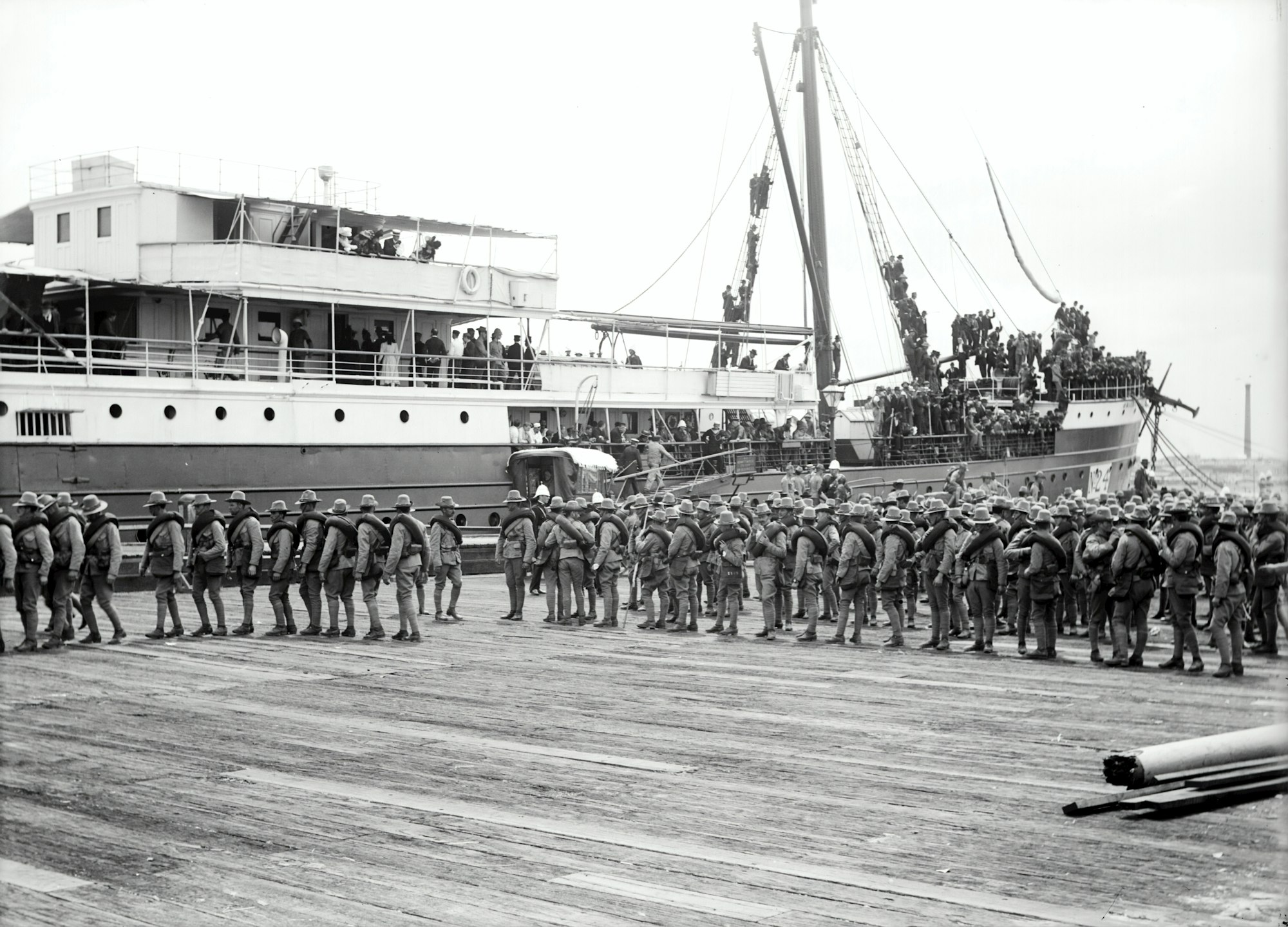- M1 garand
It is one of the most famous guns in the world characterized by accurate injury, easy to maintain and have a good range.
The U.S. Army used that rifle from 1936 to 1957.This weapon was designed and manufacture during the war by the United States and distributed to the allied forces.These features made it one of the most famous weapons in the world during that time , especially those used by the Allies in World War II.
Kar 98
It was a combat rifle manufactured in Germany in 1933, and the Kerbener rifle was used in World War II.This rifle is characterized by it’s measurements , the large bullets made it reach a very far distance
This weapon was used by the German soldiers and their axis allies and It also used to have a telescope, kar 98 become a very popular sniper rifle during the war , This gun remains the hunters' favorite weapon to this day
That's what made it one of the most famous weapons in the world....
Mosin nagant
It was a Russian rifle with a five-shot internal store, it has been involved in many wars, conflicts and revolutions since the beginning of the last century.This rifle was the most famous rifle in Russia before the AK-47 was invented
It was used by one of the world's most dangerous snipers, especially the soviet sniper (Vassili Zaitsev) he was famous because it was reportedly announced by the Soviet the he killed around 225 soldiers
That's what made it one of the most famous weapons in the world
STG 44
This is a German selective-fire assault rifle developed in Nazi Germany during World War II and was the first of it kind in terms of its widespread range. It also was known under the names of the 43 and the 44 automatic rifle, which are models that have enabled the development of this weapon. The STG 44 designs have influenced the design of the AK-47
This gun became famous because of its appearance in most films about World War II, but it is very rare and is considered an expensive weapon, yet a number of people who are interested in war heritage are still looking for it..
Thompson
A Thompson machine gun, designed in 1920, entered service in 1938 and remained in use till the year 1971, Thompson was the official weapon of the American army who used it in World War II, the Vietnam War and many others wars around the world , and it was the gangsters favorite weapon when there was a war between gangs at that time, designed by John Thompson and named after him.A.45 ACP means 11.43×23mm.It weighs 4.9 kg.Thompson shoots 600 bullets a minute.The nozzle speed is 285 meters per second.Impressive range 200 meters The feed system is a 20-bullet square warehouse, and a 100-bullet circular storage. He made 2 million and 700, 000.
Dp _27
DP-27 is a light machine gun firing the 7.62×54mmR cartridge that was primarily used by the Soviet Union, with service trials starting in 1927 followed by general deployment in 1928. Besides being the standard Soviet infantry light machine gun (LMG) during WWII, with various modifications it was used in aircraft as a flexible defensive weapon, and it equipped almost all Soviet tanks in WWII as either a flexible bow machine gun or a co-axial machine gun controlled by the gunner. It was improved in 1943 producing the DPM, but it was replaced in 1946 with the RP-46 which improved on the basic DP design by converting it to use belt feed. The DP machine gun was supplemented in the 1950s by the more modern RPD machine gun and entirely replaced in Soviet service by the general purpose PK machine gun in the 1960s
Doshka
A Soviet heavy machine gun with a V-shaped "butterfly" trigger, firing the 12.7×108mm cartridge. The weapon was also used as a heavy infantry machine gun, in which case it was frequently deployed with a two-wheeled mounting and a single-sheet armour-plate shield. It took its name from the weapons designers Vasily Degtyaryov, who designed the original weapon, and Georgi Shpagin, who improved the cartridge feed mechanism. It is nicknamed Dushka (a dear or beloved person) in Russian-speaking countries, from the abbreviation
Mg 42
Designed to be low-cost and easy to build, the MG 42 proved to be highly reliable and easy to operate. It is most notable for its very high cyclic rate for a gun using full power service cartridges, averaging about 1,200 rounds per minute compared to around 850 for the MG 34, and perhaps 450 to 600 for other common machine guns like the M1919 Browning or Bren. This ability made it extremely effective in providing suppressive fire, and its unique sound led to it being nicknamed "Hitler's buzzsaw".
The MG 42 was adopted by several armed organizations after the war, and was both copied and built under licence. The MG 42's lineage continued past Nazi Germany's defeat, forming the basis for the nearly identical MG1 (MG 42/59), chambered in 7.62×51mm NATO, which subsequently evolved into the MG1A3, and later the Bundeswehr's MG 3, Italian MG 42/59 and Austrian MG 74. It also spawned the Yugoslav unlicensed nearly identical Zastava M53.
The MG 42 lent many design elements to the Swiss MG 51 and SIG MG 710-3, French AA-52, American M60 and Belgian MAG general-purpose machine guns and the Spanish 5.56×45mm NATO Ameli light machine gun though these machine guns feature
other operating mechanisms or actions than the MG 42 and its lineage.
PPSH
The PPSh is a magazine-fed selective fire submachine gun using an open bolt, blowback action. Made largely of stamped steel, it can be loaded with either a box or drum magazine and fires the 7.62×25mm Tokarev pistol round.
The PPSh saw extensive combat use during World War II and the Korean War. It was one of the major infantry weapons of the Soviet Armed Forces during World War II. Around six million PPSh-41s were manufactured. In the form of the Chinese Type 50 (licensed copy), it was still being used by the Viet Cong as late as 1970. According to the 2002 edition of the Encyclopedia of Weapons of World War II the PPSh was still in use with irregular militaries
Mp40
Wehrmacht's favorite weapon.
Designed in 1938 by Heinrich Vollmer with inspiration from its predecessor the MP 38, it was heavily used by infantrymen (particularly platoon and squad leaders), and by paratroopers, on the Eastern and Western Fronts. Its advanced and modern features made it a favorite among soldiers and popular in countries from various parts of the world after the war. It was often called "Schmeisser" by the Allies, after Hugo Schmeisser who designed the MP 18, although he was not involved in the design or production of the MP40. The weapon's other variants included MP 40/I and the MP 41. From 1940 to 1945, an estimated 1.1 million were produced by Erma Werke.


